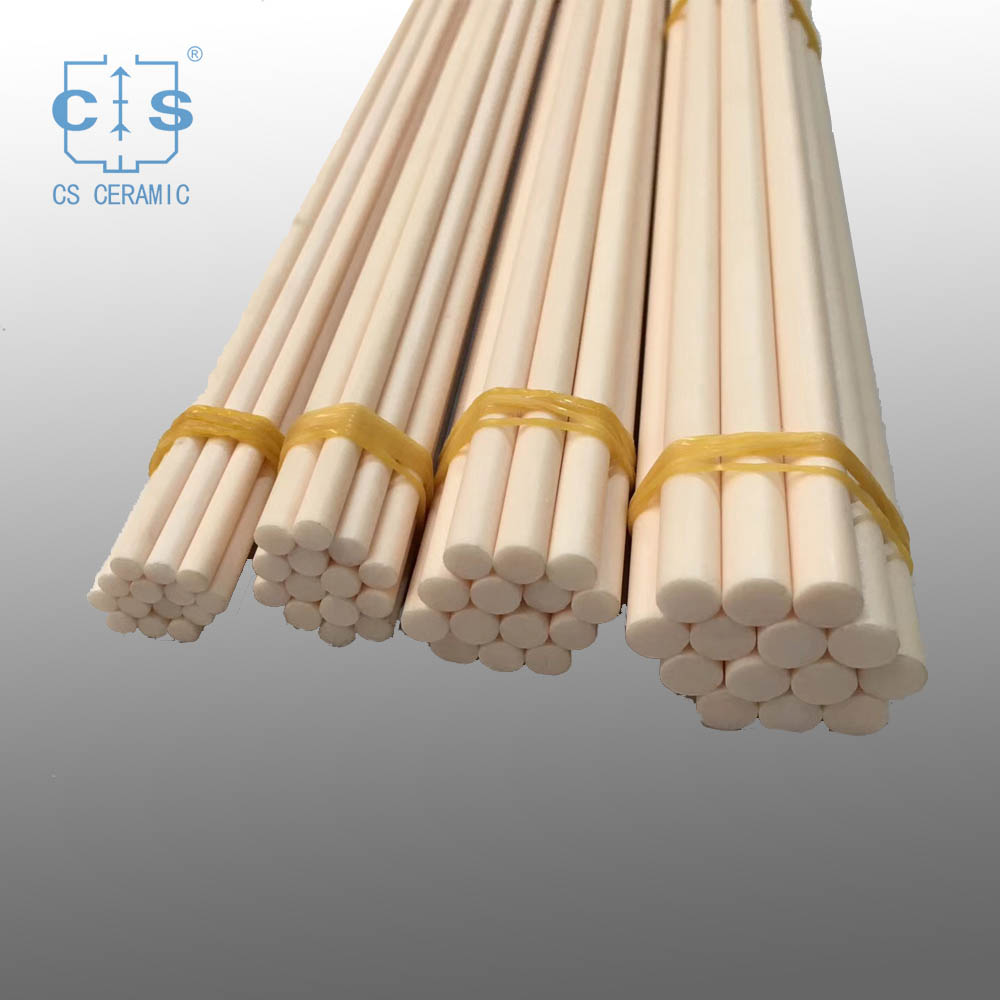Aluminium oxide (Al2O3) rods, commonly referred to as alumina ceramic rods, constitute an exceptional category of engineering materials that embody a distinctive blend of superior qualities. Renowned for their unparalleled hardness, resilience, and thermal endurance, these rods are indispensable in a myriad of industrial settings.

A standout feature of alumina ceramic rods lies in their remarkable hardness, ranking second only to diamond on the Mohs scale. This exceptional hardness endows them with the ability to withstand severe wear and abrasion, rendering them ideal for applications where resilience against mechanical stress is crucial. Furthermore, their impressive compressive strength ensures they can support heavy loads without compromising their structural integrity.
Another noteworthy aspect of these rods is their exceptional thermal stability, enabling them to withstand temperatures as high as 1,800°C (3,272°F) without significant structural alterations or degradation. This remarkable heat resistance makes them a prime choice for applications involving extreme temperatures, such as furnace components, kiln linings, and high-temperature industrial processes.
Beyond their mechanical and thermal prowess, alumina ceramic rods also exhibit exceptional electrical insulation properties. Their high resistance to electrical current flow renders them invaluable in the electronics industry, where they find applications in various electrical components and devices. Their superior dielectric strength and low thermal conductivity further augment their suitability for electrical applications.
Moreover, alumina ceramic rods possess excellent chemical resistance, allowing them to endure exposure to a broad spectrum of corrosive agents, acids, and alkaline solutions. This characteristic makes them a preferred material in the chemical processing industry, where they are utilized in the fabrication of equipment and components that must withstand harsh chemical environments.
The exceptional properties of alumina ceramic rods have made them an indispensable component in the manufacturing industry, where they are employed in a wide range of applications. One of the primary areas where these rods excel is in the production of cutting tools and abrasives.
The high hardness and wear resistance of alumina ceramic rods make them an ideal material for the manufacture of cutting tools, such as drill bits, end mills, and cutting inserts. These tools are used in the machining of various materials, including metals, plastics, and composites, and their performance is greatly enhanced by the use of alumina ceramic components. The exceptional durability of these rods ensures that the cutting tools maintain their sharp edges for extended periods, reducing the need for frequent replacement and improving overall productivity.
In addition to cutting tools, alumina ceramic rods are also widely used in the production of abrasive products, such as grinding wheels, polishing pads, and sandpapers. The high hardness and wear resistance of these rods allow them to maintain their abrasive properties for an extended period, resulting in more efficient and effective material removal and surface finishing processes.
Another key application of alumina ceramic rods in the manufacturing industry is in the production of mechanical seals and bearings. These components are critical in maintaining the proper functioning of various industrial machinery, including pumps, compressors, and turbines. The exceptional hardness, chemical resistance, and thermal stability of alumina ceramic rods make them an ideal choice for these applications, ensuring reliable and long-lasting performance even in demanding operating conditions.
Furthermore, alumina ceramic rods are employed in the manufacture of various furnace components, such as thermocouple protection tubes, crucibles, and refractory materials. These components are essential in high-temperature industrial processes, where their ability to withstand extreme temperatures and resist thermal shock is of paramount importance.
In conclusion, alumina ceramic rods, with their unparalleled combination of hardness, resilience, thermal endurance, electrical insulation, and chemical resistance, have emerged as a cornerstone material in the manufacturing industry. Their widespread adoption in applications ranging from cutting tools and abrasives to mechanical seals, bearings, and furnace components underscores their versatility and reliability. As industries continue to push the boundaries of performance and efficiency, alumina ceramic rods will undoubtedly play an increasingly crucial role in enabling innovative and durable solutions that meet the demands of modern manufacturing.




 info@csceramic.com
info@csceramic.com







 +86 18273288522
+86 18273288522